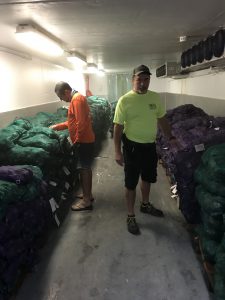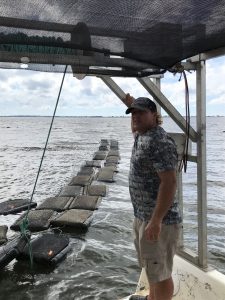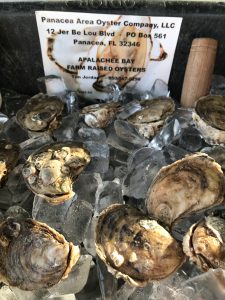There are a lot of good oyster quotes. One I remember from childhood is the saying to only eat oysters in months with the letter “r,” basically September to April. I believe this originated when all oysters came from the wild. This was a way to avoid the hot months that may have led to a watery oyster, or even food poisoning. Today, with the rise of oyster aquaculture and refrigeration, oysters can be enjoyed year-round.
The Florida Fish and Wildlife Conservation Commission recently made the tough decision to shut down wild oyster harvesting in Apalachicola, FL for up to five years in response to a struggling bay oyster population threatened by water flow issues and overharvesting. This was devastating news to an area that historically produced 90% of the state’s oysters and 10% of the nation’s. On the bright side, oyster aquaculture has been steadily growing in the area and is working hard to fill some of the gap.
A team of Florida Sea Grant Agents recently made a visit to Apalachicola to learn more about this historic oyster town and how the industry is adapting. Our first stop was Water Street Seafood, the Florida Panhandle’s largest seafood distributer. Water Street provides a wide diversity of both fresh and frozen seafood, including oysters, delivering daily in northwest Florida and shipping worldwide. We visited their oyster processing facility where we saw mesh bags of oysters brought in from Louisiana and Texas. The oysters, both farmed and wild caught, are carefully cleaned and sorted, with some going to the live, halfshell, restaurant market and some shucked onsite for the shucked market.
Next, we visited one of the many new oyster aquaculture farms in the area. Oysters farms are permitted by the state and are located in waters that have been carefully evaluated for their suitability for oyster production. Small plots are leased to the farmer allowing off-bottom production in mesh bags teathered with anchors in the shallow, productive bay waters. Oyster farmers tend to their crop by turning the bags regularly to reduce fouling of the oyster shell, and sorting by size as the oyster grows. Oysters take between eight to eighteen months to reach a harvest size.
Given the increasing demand for oysters by tourists and locals, we can thank aquaculture for keeping these tasty gems on our plates. If you are lucky enough to find some locally raised oysters on the menu, take the opportunity to try something new and support a local farmer.

Oyster bag holding cooler at Water Street Seafood with green bags holding wild caught oysters and purple bags holding farm raised oysters. (credit: L. Tiu)
- What’s Bugging You? - June 6, 2025
- Getting Your Farm Pond Ready for Spring - March 7, 2025
- The Rare Coastal Dune Lakes of Walton County - September 13, 2024


